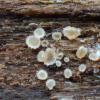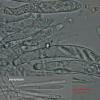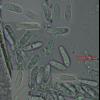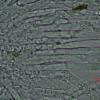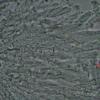
09-12-2025 12:06
 Andgelo Mombert
Andgelo Mombert
Bonjour,Je recherche l'article concernant Hypobryo

07-12-2025 16:07
Arnold BüschlenHallo, ich habe in einer Moos-Aufsammlung (epiphy

08-12-2025 21:04
Mark Stevens"Hello everyone,I'm relatively new to microscopy (

08-12-2025 18:59
 Lothar Krieglsteiner
Lothar Krieglsteiner
.. found by a seminar-participant, I do not know t

08-12-2025 17:37
 Lothar Krieglsteiner
Lothar Krieglsteiner
20.6.25, on branch of Abies infected and thickened

16-03-2014 22:00
Hello,I found this species a few months ago but ha

08-12-2025 13:39
Thomas Læssøehttps://svampe.databasen.org/observations/10572899
Hyaloscypha sp?
François Valade,
23-01-2016 19:05
 hello
helloThis species have been collected on hardwod by René Chalange. He gave me it for identification but I am not sure about the genus.
Apothecia are small, about 1 mm.
asci with croziers, up to 60x7-8µm, blue in lugol
paraphysis thin and straight
spores with 1 septum, (N=10) (9,68)10,64(12,56) x (3,01)-3,45-(3,69) µm
hairs up to 80 µm long, tip rounded, with a faint glassy content, disappearance in KOH is not evident, but I think it does, with a few incrustations
If somebody have an idea, it will be wellcome.
thank you
cheers
François
Hans-Otto Baral,
23-01-2016 20:17

Re : Hyaloscypha sp?
Hi Francois
if you could find hairs with a longer glassy tip (I see one with a short) I would say Protounguicularia (Olla) transiens. Then the asci should have protuberances but not croziers.
But the spores are too large for this species.
if you could find hairs with a longer glassy tip (I see one with a short) I would say Protounguicularia (Olla) transiens. Then the asci should have protuberances but not croziers.
But the spores are too large for this species.
François Valade,
24-01-2016 09:15

Re : Hyaloscypha sp?
Hello Zotto
I was looking for such glassy tips, because the collector thought it could be Arachnopeziza monoseptata (well described by Galan and Raitviir), but I did not.
For the moment I have no idea. I does not matter.
thank you for your answer.
cheers
François
I was looking for such glassy tips, because the collector thought it could be Arachnopeziza monoseptata (well described by Galan and Raitviir), but I did not.
For the moment I have no idea. I does not matter.
thank you for your answer.
cheers
François

